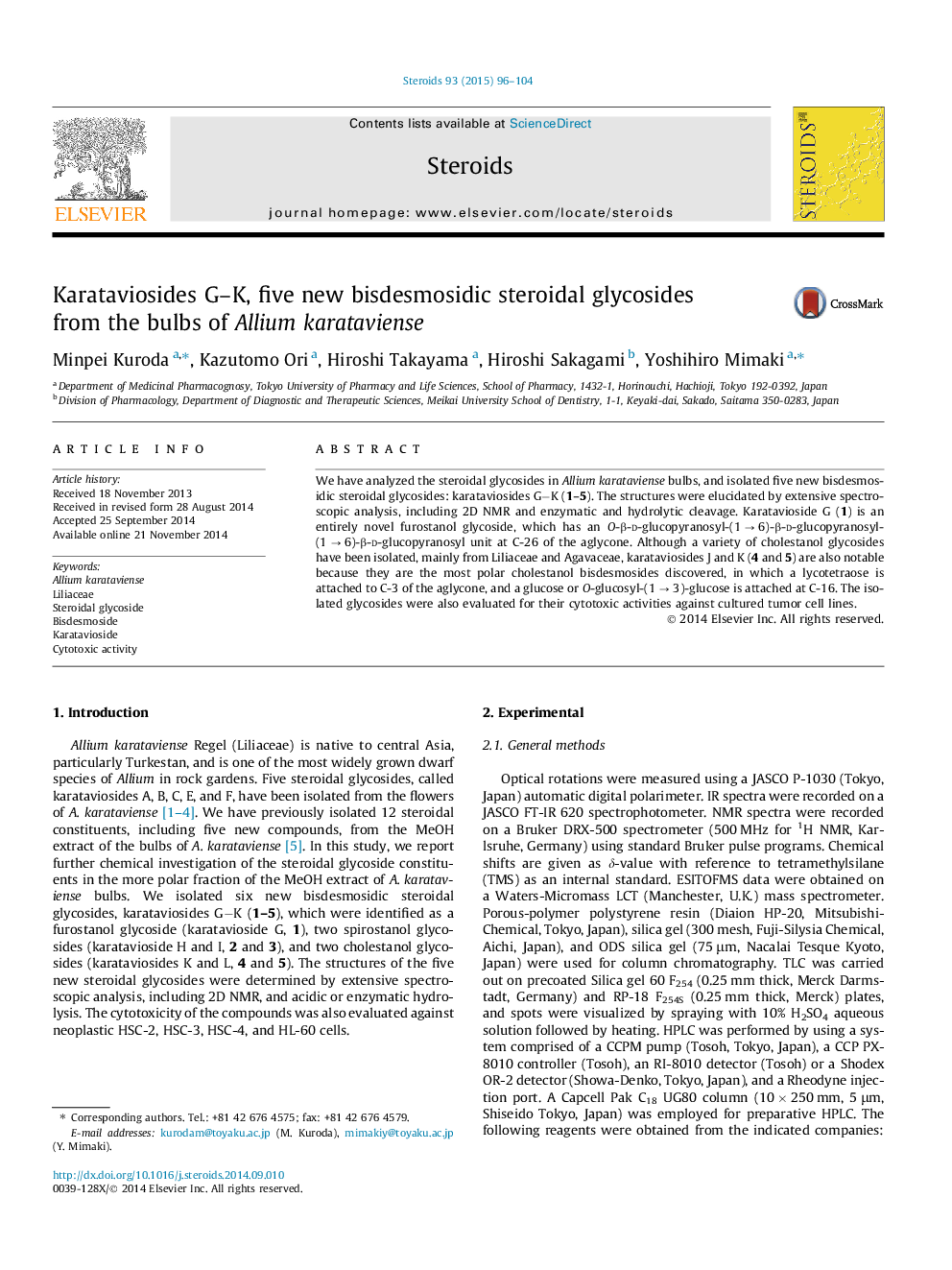| Article ID | Journal | Published Year | Pages | File Type |
|---|---|---|---|---|
| 2027926 | Steroids | 2015 | 9 Pages |
•Karataviosides G–K (1–5) were isolated the bulbs of Allium karataviense.•Compounds 1–5 are new bisdesmosidic steroidal glycosides.•The structures were elucidated by NMR analysis and the results of hydrolysis.•Compound 1 is furostanol glycoside with a triglucosyl unit at C-26 of the aglycone.•Compounds 1–5 were evaluated for their cytotoxic activities against tumor cell lines.
We have analyzed the steroidal glycosides in Allium karataviense bulbs, and isolated five new bisdesmosidic steroidal glycosides: karataviosides G−K (1–5). The structures were elucidated by extensive spectroscopic analysis, including 2D NMR and enzymatic and hydrolytic cleavage. Karatavioside G (1) is an entirely novel furostanol glycoside, which has an O-β-d-glucopyranosyl-(1 → 6)-β-d-glucopyranosyl-(1 → 6)-β-d-glucopyranosyl unit at C-26 of the aglycone. Although a variety of cholestanol glycosides have been isolated, mainly from Liliaceae and Agavaceae, karataviosides J and K (4 and 5) are also notable because they are the most polar cholestanol bisdesmosides discovered, in which a lycotetraose is attached to C-3 of the aglycone, and a glucose or O-glucosyl-(1 → 3)-glucose is attached at C-16. The isolated glycosides were also evaluated for their cytotoxic activities against cultured tumor cell lines.
Graphical abstractFigure optionsDownload full-size imageDownload as PowerPoint slide
